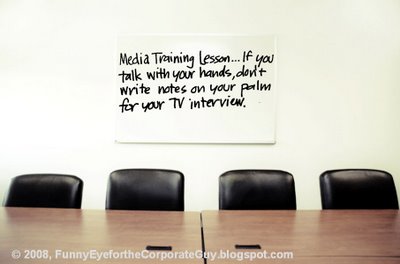Providing customized media training offers one of the best opportunities for a B2B PR firm to impact client communications performance while also strengthening the relationship. The agency team can also come away with a deeper understanding of the company’s business goals, mission, and messaging, making for more successful media outcomes. Want to do media training properly? Follow these five steps:
Start with the big picture. Even if interviews have already been secured successfully, the odds are that the client doesn’t have a full grasp on the media landscape and how journalists work today. Start with an educational overview of media to set the stage.
Refine key messages. This one sounds like a no-brainer, but you’d be surprised how often full media training sessions (read: simulated interviews with full critique) devolve into an overhaul of presumably approved story points. If the session takes place after you’ve worked with a client for a while, this is an excellent time to review background materials to make sure wording is up to date. Review to make sure the tone is right for each target and that the messages aren’t too jargon-heavy or commercial. It’s wise to be prepared to rip apart the master messaging document to make sure it’s working for where the client and the story are now but if a revamp is needed, it should happen before the training session.
Use video. It’s important to focus on the likeliest Q&A scenarios to face each client; however, video playback is critical even for those clients who will never be offered for a TV spot so that the critique can be meaningful. The best trainings are highly tailored, and the agency trainer needs to know key media targets. There’s no point in role-playing a mass media interview for a B2B client, of course, and casting the net too broadly (or at too high a level) can be confusing, so video simulations should be focused on interviews with specific imagined media outlets.
Be a constructive critic. Once the practice interviews take place, it’s important to be observant and comment on everything from hand gestures to repetitious words and garbling of the message. This is the most important part of the session and where the real change can take place in client presentation. Of course, a generous allotment of praise and reinforcement is also advisable.
Recap the session…quickly. Best to do this within a few days, while the learnings are still fresh. This documentation will help the client perfect interviews and positively impact the way client stories are offered to press. Most importantly, the session should be flexible, so key materials can be easily reviewed in advance of a key media conversation as a refresher. No one will remember everything!

